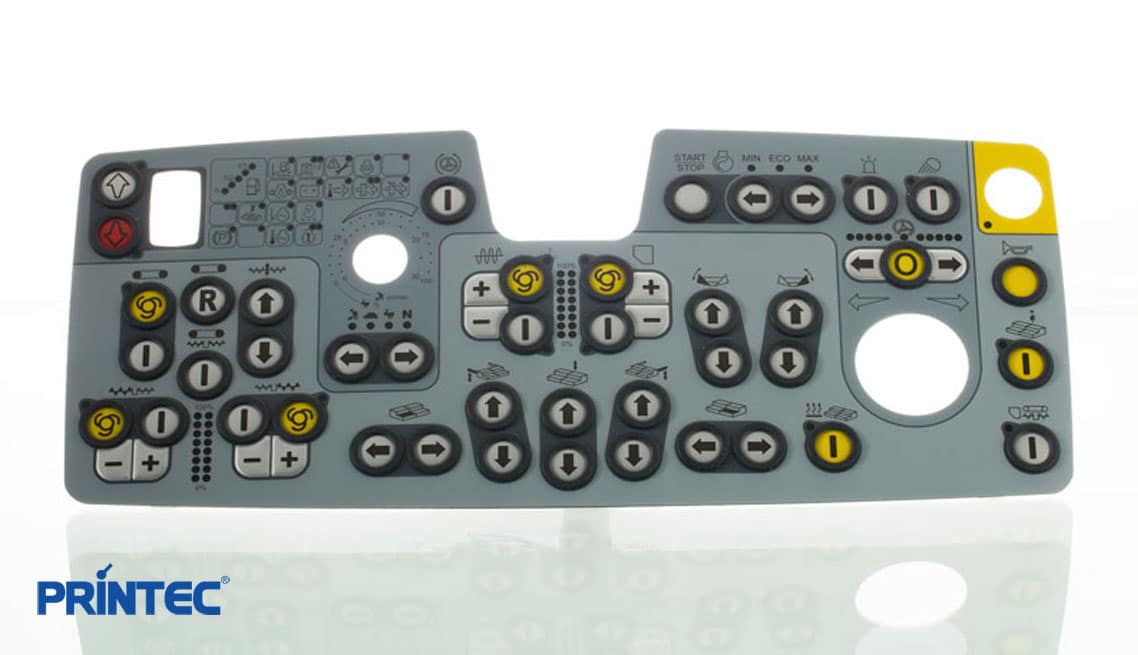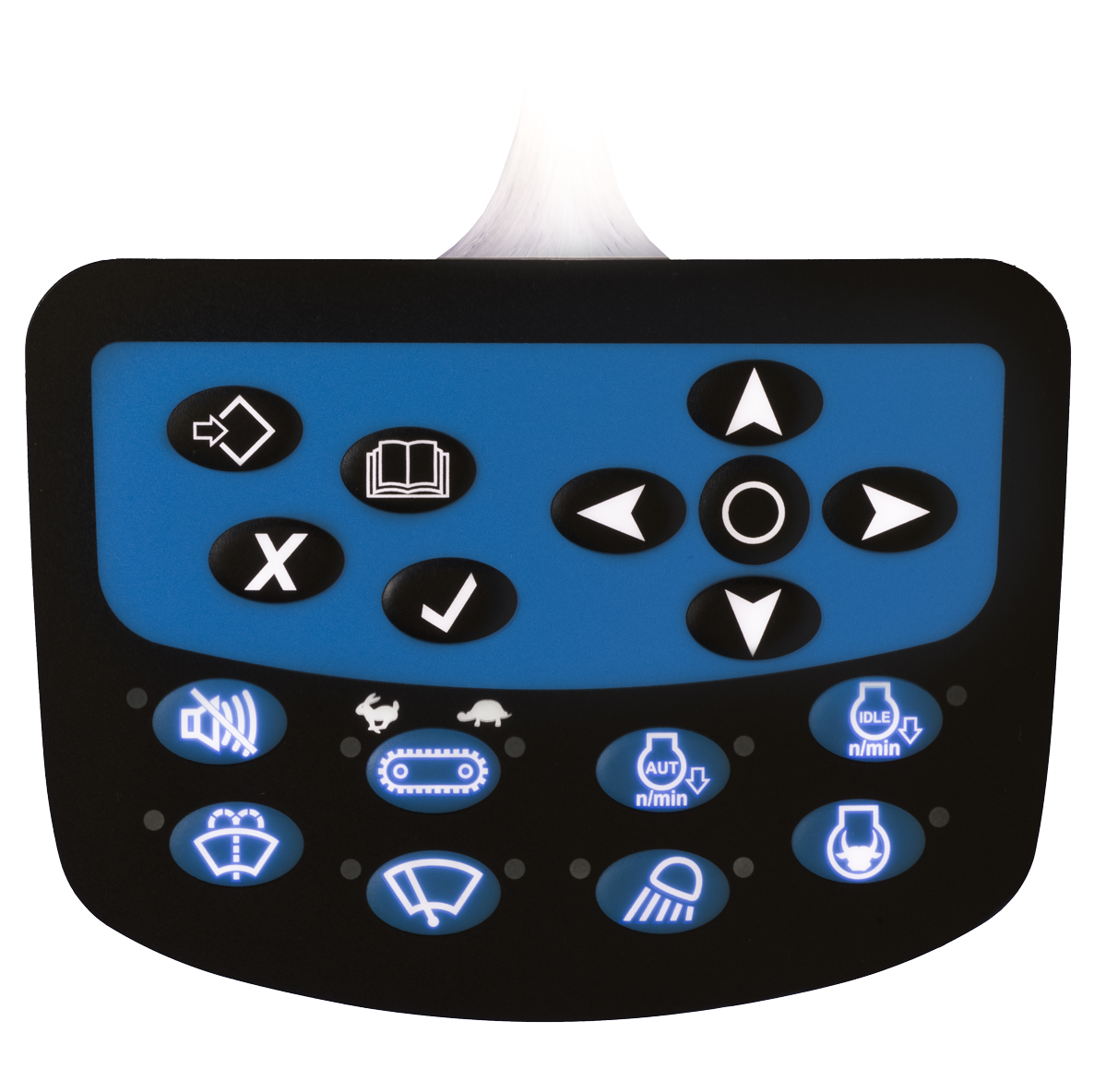Projects requiring accuracy should always involve a capable membrane switch manufacturer from the start.
Projects requiring accuracy should always involve a capable membrane switch manufacturer from the start.
Blog Article
All Regarding Membrane Switch: Recognizing Its Design and Performance
When you believe about the control user interfaces in modern devices, membrane layer switches usually enter your mind. These components are much more than simply buttons; they blend layout and capability perfectly. Understanding exactly how they work and what makes them efficient can alter your viewpoint on day-to-day electronic devices. There are nuances to their style and efficiency that you might not be aware of. Let's explore what sets membrane layer changes besides various other control systems.
What Are Membrane Buttons?

Their smooth nature makes them very easy to clean and immune to dirt and dampness, an important feature in lots of atmospheres. Membrane switches can additionally be customized concerning shape, dimension, and graphics, allowing makers to develop distinct user interfaces customized to certain products. And also, they're lightweight and slim, which assists in minimizing the general bulk of tools. Overall, membrane layer buttons play a considerable function in boosting user experience throughout a large variety of applications.
Exactly How Membrane Changes Job
When you push a key on a membrane button, it turns on an uncomplicated yet efficient system. The top layer, commonly constructed from adaptable material, lowers onto a conductive layer below it. This action bridges the space between conductive traces, completing an electrical circuit. As soon as the circuit shuts, it sends out a signal to the gadget's controller, which analyzes your input.
You'll observe that the tactile feedback differs based on the switch style, providing either a soft click or a more pronounced reaction. As soon as you release the secret, the membrane returns to its original position, resuming the circuit and quiting the signal. This process occurs practically instantly, ensuring a receptive customer experience.
Membrane layer switches are prominent as a result of their resilience and resistance to dust and wetness, making them perfect for various applications, from household appliances to clinical devices. Understanding this operation assists you value their prevalent use.
Key Elements of Membrane Switches
Comprehending the vital components of membrane switches is essential for understanding their performance and layout. At the core, you'll locate the graphic overlay, which offers the aesthetic user interface for individuals. Beneath that, there's a spacer layer that divides the circuit layers, ensuring that they do not make call until pushed. The circuit layer is where the magic occurs; it includes conductive traces that complete the circuit when you push the button. An additional essential component is the glue backing, permitting the switch to abide by surfaces firmly. Finally, the safety layer guards against ecological variables and put on, prolonging the switch's life expectancy. Each component plays a significant role in ensuring trusted efficiency and user interaction. By understanding these components, you'll acquire understanding into how membrane switches run and their value in different applications.
Products Utilized in Membrane Switch Design
The efficiency and durability of membrane layer switches over greatly rely on the materials made use of in their style. You usually run into polyester and polycarbonate as main substrates as a result of their exceptional stamina and versatility. These materials resist scratches and chemicals, making them suitable for demanding atmospheres.
The conductive layers frequently make use of silver or carbon, chosen for their reliability and conductivity. membrane switch manufacturer. Silver gives premium performance, while carbon is an economical choice. For the overlay, you may think about a matte or shiny coating, relying on your aesthetic demands and customer experience
Make specific to pick adhesives that withstand environmental elements like temperature level and humidity. Picking the right materials will YOURURL.com guarantee your membrane layer button stands the examination of time.
Design Factors To Consider for Membrane Layer Switches
While designing membrane layer switches, it's crucial to take into account visit the site different aspects that affect their performance and individual experience. Begin by concentrating on the layout and switch size; ensure they're instinctive and easy to browse. Take into consideration the responsive feedback you intend to supply-- will individuals need a recognizable click or a softer touch? Additionally, think of the products you'll utilize, as they'll impact toughness and appearances.
Don't ignore the visuals layout; clear labeling and shade contrast are significant for visibility. Verify your design fits environmental factors, like wetness or temperature level variations, which might affect efficiency. Remember the significance of testing prototypes with real customers to collect feedback and make needed modifications. This repetitive procedure assists you improve the design, confirming it satisfies both practical and visual requirements effectively. By meticulously considering these elements, you'll create a membrane switch that boosts usability and contentment.
Applications of Membrane Buttons
Membrane buttons are versatile parts located in various applications, from industrial equipment to customer electronic devices. You'll see their impact in machines that call for durable user interfaces and in gadgets that profit from smooth designs. Comprehending these applications helps you value the functionality and usefulness of membrane layer buttons in day-to-day innovation.
Industrial Devices Use
When you're looking to boost the capability of industrial devices, membrane layer buttons supply a dependable option that incorporates longevity with user-friendly design. These switches are ideal for extreme settings, offering resistance to dirt, wetness, and chemicals. You'll find them in control panels for manufacturing makers, cooling and heating systems, and clinical devices, where precision and responsiveness are important. Their reduced profile means they fit perfectly into various devices, saving important space while preserving convenience of usage. With personalized graphics and backlighting options, you can produce an instinctive user interface for operators, improving effectiveness and safety. And also, their lengthy life expectancy reduces maintenance costs, making them a wise financial investment for your industrial applications. Embrace membrane layer switches to enhance your operations and boost total performance.
Consumer Electronic Devices Integration
In the domain name of customer electronic devices, membrane switches play an important duty in boosting individual communication and gadget capability. You'll locate them in tools like microwaves, remote controls, and video gaming consoles, offering a smooth method to communicate with technology. Their sleek find layout enables easy combination right into various items, making controls instinctive and easy to use. With their capability to integrate graphics and backlighting, you can appreciate a modern visual that matches the device's total appearance. Membrane layer switches also guarantee toughness and resistance to dirt and wetness, prolonging the life expectancy of your electronics. By picking membrane layer buttons, you improve not just the capability but also the design of your gadgets, making everyday interactions smooth and delightful.
Advantages and Disadvantages of Membrane Layer Switches
While membrane switches offer an array of benefits, they also include some disadvantages that you must take into consideration. One considerable benefit is their small layout, making them ideal for space-constrained applications. They're also cost-efficient, offering a sturdy service with a low production price. On top of that, their smooth surface is easy to clean, enhancing hygiene in environments like hospitals.

Nonetheless, there are disadvantages. Membrane switches can have a much shorter life expectancy contrasted to mechanical buttons, especially under hefty use. They can also be less tactile, which could affect customer comments during operation. Furthermore, if harmed, repairing them can be challenging and frequently calls for complete replacement. Inevitably, their sensitivity to severe temperature levels and ecological conditions might limit their efficiency in specific settings. Stabilizing these pros and disadvantages will certainly aid you identify if membrane buttons are the ideal fit for your job.
Frequently Asked Questions
How Long Do Membrane Changes Commonly Last?
Membrane changes generally last between 5 to 10 years, relying on usage and environmental conditions. You'll intend to assess variables like wear, exposure to wetness, and temperature level variations to assess their long life effectively.
Can Membrane Layer Changes Be Customized for Certain Layouts?
Yes, you can tailor membrane layer switches to fit specific styles (membrane switch manufacturer). You'll have the freedom to pick shades, forms, and layouts that match your job's demands, guaranteeing they mix seamlessly with your total visual
What Is the Cost Variety for Membrane Switch Over Production?
The expense variety for membrane button production usually falls in between $1 and $10 per device, relying on variables like style complexity, quantity, and materials. You can get quotes from producers to discover the very best choice.

Are Membrane Layer Changes Water-proof or Resistant?
Membrane layer buttons can be developed to be water-proof or resistant, depending upon products made use of and construction approaches. If you require them for wet atmospheres, guarantee you define those requirements during the style procedure.
How Do Membrane Changes Compare to Typical Buttons?
Membrane layer buttons are usually thinner and more versatile than conventional buttons, supplying a smooth style. They're often easier to cleanse and incorporate, but could not give the responsive comments you're utilized to with mechanical options.
Final thought

Report this page